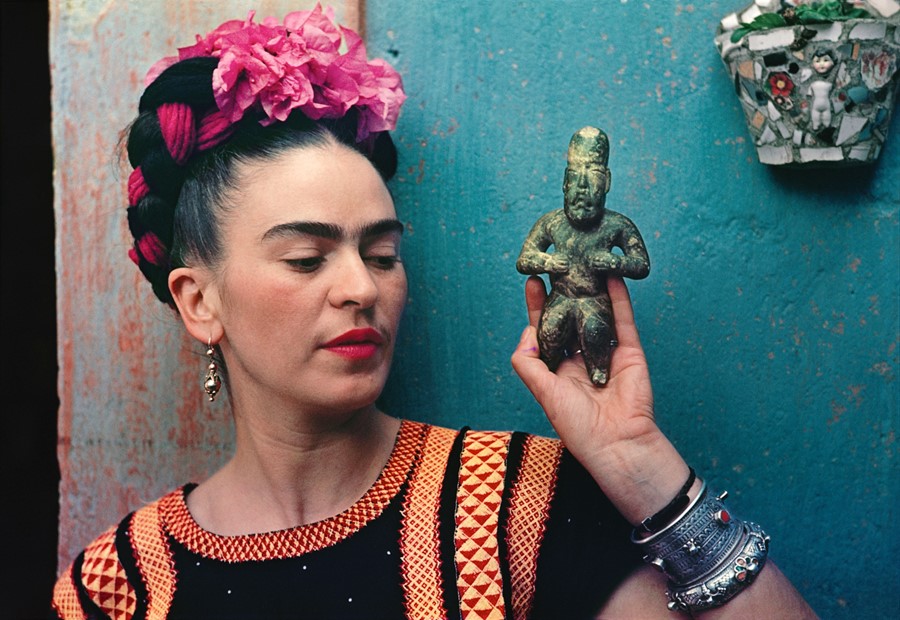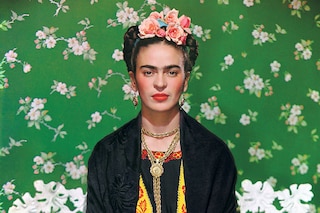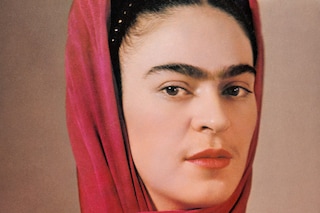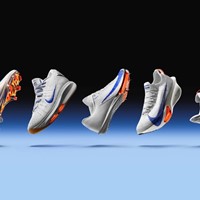The Mexican artist is instantly recognisable for her distinct style – we explore how she used clothes to shape her identity
She is instantly recognisable: the dark braids and bright flowers, the intricately embroidered blouses and froth of skirts, the chunky necklaces, the lace, the ribbons, the monobrow. Frida Kahlo is easily distilled to a number of defining details. Ones we can immediately place. We’ve seen them, again and again – on fridge magnets, t-shirts sold on Camden Market stalls, postcards spinning in museum displays.
The man behind some of the most famous images of Kahlo, the photographs which have helped canonise her, was a man called Nikolas Muray. Muray produced many astonishingly beautiful portraits of his long-time friend and lover over a period of years (which, as of tomorrow, are on display in the Museum of Latin American Art). Many of them are well-known: Frida against a brilliant turquoise wall, the pink of her lips matching the flowers pinned in her hair, an Olmeca Figurine held up in one hand; or sitting on a New York rooftop, cigarette between her fingers, the blue spill of her skirt echoing the sky behind. In another, she stares straight at the camera, the floral prints on her skirt and top mirroring a sprigged, green background. The black and white portraits of the artist at work in her studio are equally captivating. All are vividly representative of a woman who knew how to dress for effect. All are among the first images you’ll find if you Google Frida Kahlo’s name.
The story of her clothing is rather incredible, given that after Kahlo’s death in 1954 the majority of her wardrobe lay untouched for fifty years. Her bathroom and private dressing room – where her clothes were housed – lay through a door to the right of her bedroom at her home in Casa Azul (now the Museo Frida Kahlo). It was sealed shut on partner Diego Rivera’s orders and only opened again in 2004. In Self Portrait in a Velvet Dress, restorers Denise and Magdalena Roseinzweig write about the heady moment of entering a space that had been left to its own devices for five decades: “inside, a strong smell, half-acrid, half-sweet, pervaded the air, a mixture of dampness, medicines, dust, and time.” Her wardrobe – “a simple piece painted white and weathered by time” – is described as holding “precious treasures.”
“After Kahlo’s death in 1954 the majority of her wardrobe lay untouched for fifty years. Her bathroom and private dressing room... (were) sealed shut on partner Diego Rivera’s orders and only opened again in 2004”
Most were not only precious treasures but familiar ones too: having already appeared in countless portraits of Kahlo, including those shot by Muray. She consciously cultivated a style that set her apart and spoke to both her personal life and her artistic intentions. Her clothes were beautiful. They were obviously something she approached with great relish. But they were also canny: those details listed above contributing to how she was viewed in life and continues to be viewed now.
Her carefully assembled look was a bricolage of places and reference points. She mixed embroidered Tehuana dresses (originally worn by women from the Tehuantepec region of South Mexico) with Huipil blouses (Mayan in source: each pattern spinning its own, specific story), Rebozo scarves, and any number of fabrics from both China and Europe. Many of these garments had strong associations with powerful women or particular manifestations of femininity. Alongside the obvious aesthetic pleasure they provided, this was a highly charged, symbolic uniform: speaking to Kahlo’s heritage and gender, whilst also allowing for a certain amount of myth-making. They gave her room to tell stories about herself in fabric, as well as paint.
Kahlo really understood the power of image. She spent hours in front of the mirror, and regularly enjoyed the chance to shop - as well as commissioning the making of particular garments. It’s a preoccupation apparent from her teenage years onwards when she posed for a family portrait in a three-piece tweed suit, complete with shirt and tie. Her hair is tied back. Her stance is assertive, with one hand in her pocket as she looks towards the camera. Throughout her life she used her wardrobe choices as a means to play with perception, helping to define how she occupied space as a woman, as well as an artist.
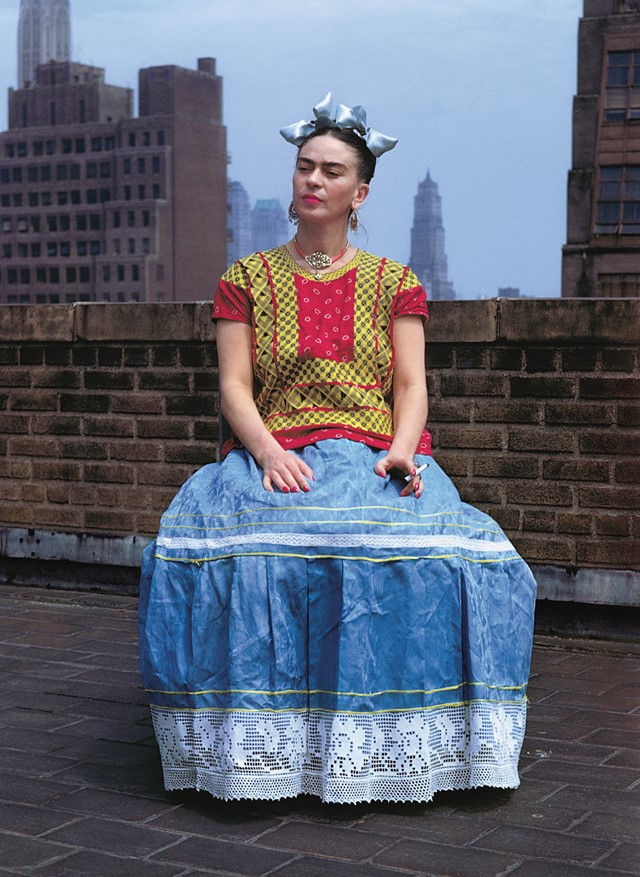
These garments formed a significant part of her often fraught relationship with her body too: part and parcel of framing and, more often than not, hiding various parts of it. Kahlo’s left leg was thinner and shorter than her right as the result of polio aged six. When younger, she’d kept it out of sight under bandages and thick socks. Later those beautiful long skirts she’s now associated with were effective in both defining her identity, and concealing what lay beneath.
The next stage in the narrative is well known. At the age of eighteen, Kahlo’s physical world was changed forever when an electric trolley car hit the bus she was travelling on. The trolley’s metal handrail went through her body, and she sustained a horrific number of injuries to her ribs, pelvis, collarbone and spine, as well as her legs. In a bizarre twist, someone else on the bus had been travelling with a packet of powdered gold. On the point of collision, this exploded all over Kahlo. Her skin shimmered as she lay among the wreckage.
“Alongside the obvious aesthetic pleasure her clothes provided, this was a highly charged, symbolic uniform: speaking to Kahlo’s heritage and gender, while also allowing for a certain amount of myth-making”
The trauma of injury, recovery, and subsequent physical problems would dictate the parameters of the rest of her life, whilst also forming a major component in the themes she confronted in her work. Taking up painting when still confined to her bed, she’d repeatedly explore the dark consequences of pain and incapacitation. This experience inevitably affected her mode of dress too: partly for very practical reasons. After the incident her spine required extra support, meaning she quickly became familiar with the constriction of full-torso plaster casts – as well as leather and steel corsets. Many are still on display in her home. They are extraordinary objects: part garment, part medical device. Many are also part artwork. She famously took to them with her paintbrush, adding symbols and plants and fragments of scenes onto their surfaces. Perhaps her most famous is the red hammer and sickle daubed over the bust – clearly flagging her political allegiances.
The essayist Leslie Jamieson claims that these corsets “still frame an invisible woman.” Most of her clothes do, in one way or another, though the corsets are perhaps the most explicit in their framing. Having nestled close to the artist’s skin – quite literally supporting her - they hold an eerie sense of the presence they once housed. But the rest of her garments do similar. One can only imagine what it must have been like to explore the contents of her wardrobe for the first time, to bring all those familiar shapes and lines back into the light.
Frida Kahlo’s image resonates to this day. She’s frequently referenced online, those startling portraits by reposted frequently and regularly emulated by others. (Versions of her look are scattered all over Tumblr and Instagram.) Editorials like L’Officiel’s shoot with Laure Ponte in 1998 and Mariacarla Boscono’s flower-clad turn in Harper’s Bazaar in 2001 draw on all of Kahlo’s recognisable motifs, while photographers like Erik Madigan Heck seem indebted to her colour palettes and intuitive understanding of pattern.
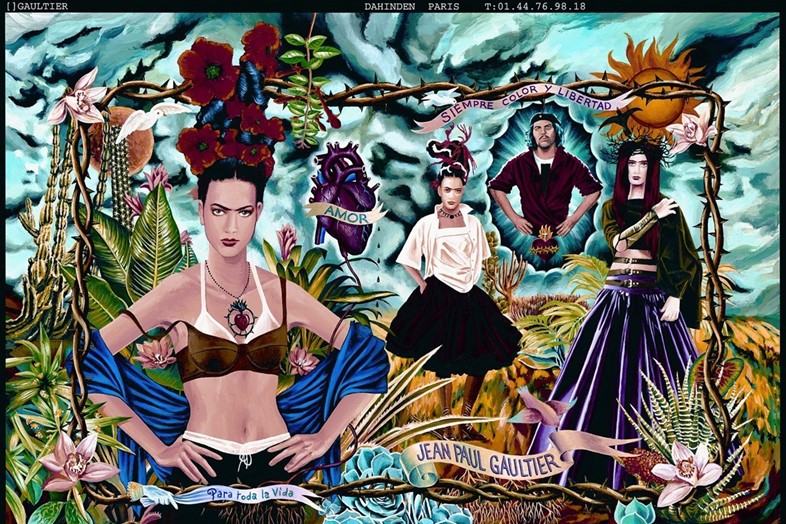
She’s also been a major point of inspiration for fashion designers: her influence rippling through the work of designers including Riccardo Tisci and Dolce and Gabbana. Jean-Paul Gaultier’s SS98 collection is explicit in its admiration – full of layers, bright patterns, and boxy tailoring, many of the models’ looks topped off with a pair of thick-set brows. Details like a black bondage-style buckled top contain echoes of the back brace worn by Kahlo in her 1944 self-portrait The Broken Column.
In fact, Kahlo’s corsets are among the most consistently referenced elements of her attire, with Rei Kawakubo and Alexander McQueen also having referenced the buckles, straps and structures Kahlo was familiar with (there’s even a Comme des Garçons dress in a pop-up exhibition on Frida’s fashion at the Museo). Her corsets were also, apparently, one of the sources for Madonna’s famous cone bustier devised by Jean-Paul Gaultier. Madonna was a vocal admirer and collector of Kahlo’s work (though her professed plans to take the lead role in a film based on the artist’s life obviously didn't quite work out…)
In a Vanity Fair article in 1995, the then chief curator at MOMA Kirk Varnedoe was quoted reflecting on Kahlo’s “constant remaking of her identity, her construction of a theatre of the self”. It’s a neat summary of an individual for whom clothes were both creative and responsive. Her choices were bold, brilliant, and often joyous: part armour, part mirror, part performance, part visual language we remain keen to decode today. No wonder we’re still enthralled.
Frida Kahlo: Through the Lens of Nickolas Muray is open from 29th April-3rd September 2017 at the Museum of Latin American Art, Long Beach California
